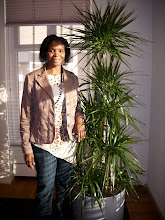It was interesting and educative to develop a TPACK lesson that had an inquiry learning perspective. Our group Leonie VanEelen and Yanieke Paalman worked as a team in the development of the lesson plan. Yes, we spiced our lesson plan to make it more under stable and userfriendly.The Inquiry learning is very fundamental to the science knowledge, learners asks question,hypotheze,design experiments, use apparatus,observe,measure,predict,record,and interpreted ,evaluate, perform statically calculation, make inferences and formulate theories or models. In TPACK a flexible teacher would know how to integrate technology that facilitates teaching and learning through networks for example on line learning, web page, and other net work that might provide efficiency and effective learning.
CONTEXT
During our lesson plan development we realised that it was not possible to start with out a context. We started from the approach of taking into account the characteristic of the teacher whom we thought was cardinal in the implementation process. A teacher that integrates knowledge and negotiates the relationship between all components of TPACK was ideal for the lesson plan but we also considered a teacher who had no technological skills and provided some intervention. The teacher’s preparedness before, during and after was of great important to our group if the lesson was to be implemented with minimum difficulties The learners prior knowledge was also considered to be of assistance in an enquiry learning, this would help the teacher to facilitate the lesson effective in an independent learning atmosphere where the learner are active participants.
TPACK
The Tpack lesson plan was a hands-on experience that provided our group with deeper insight on how the interrelatedness of the TPACK component approach had to offer. One had to either start with technological Pedagogical Content Knowledge, TechnologicalPedagogical,Knowledge,Technological,Content,Knowledge,and,Technological Pedagogical Content Knowledge. We thought of how the lesson plan in inquiry lesson would address all the TPACK components, the age of the learners and also the grade level was necessary in the design procedure.Luckly, Leonie and Yanieke used their prior knowledge to come a Topic Tsunami that could be taught in a Geography lesson for the second (2) grade in VWO at secondary school. Pupils’ age ranges from 13 to 14 years. We assumed that pupils in this grade would be familiar with the inquiry approach and work actively independently in the learning process and find answers to their questions. We didn’t think of an investigative lesson that could lead to laboratory investigation but restricted our lesson to what was available in school to suit the TPACK approach. The maximum attended of our ideal planning was twenty and of course, we were also gender sensitive in the class allocation. We discussed and read literature and map up a strategy to come up with an inquiry learning model. The fame work was the bases for the lesson plan.
We started from the perspective knowledge of PK and ended with TPCK because other parts other easily come together. later, after another discussing we thought PK was the most logical to describe one of the circles( CK or TK)and other parts of TPAK would include information about CK or TK.We choose CK.In our opinion TK is used to support delivering specific content in a specific pedagogical way to learners.
Model for inquiry learning:
1. Knowledge Attack
2. Create hypothesis
3. Gather information
4. Construct new knowledge (shifting, sorting, synthesize, draw conclusion)
5. Report (discuss & reflect)
6. Integration
In the inquiry process learners ask questions, formulate hypothesis. Gather information, construct new knowledge and report their finding which is later integrated as new knowledge. Teacher uses the TPACK approach to support learning. The figure below shows the interaction between the teacher and the students in an inquiry TPACK learning lesson.
Subscribe to:
Post Comments (Atom)

No comments:
Post a Comment